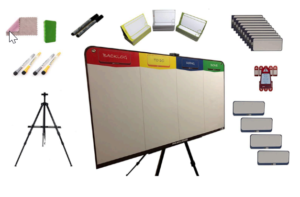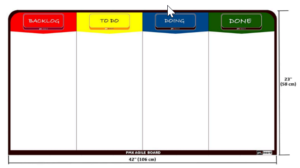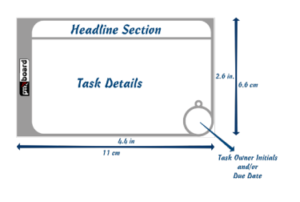OKR and Project Management
What are OKRs?
OKR stands for Objectives and Key Results. This allows to clearly define the course in a project must be set to achieve the expected result, for this OKRs are established in objectives that can be measured. The OKR method consists, first in establishing qualitative objectives, and second define the strategy to quantify the outcomes and the achievement of these objectives. In addition, it is essential that once the results of the process have been quantified, a retrospective is made to discuss the results obtained (Something that can be associated with the development of agile methodologies).
Advertisement
[widget id=”custom_html-68″]
One of the main characteristics that enhance the positive impact of OKRs is that they vary between two types of objectives:
- Very difficult objectives to achieve. The purpose of these objectives is to motivate the team and exploit their skills to the fullest.
- Achievable objectives, which can be developed smoothly by the team.
These two types of objectives must vary and coexist to achieve good outcomes.
What are the differences between OKRs and KPIs?
The main difference between KPIs and OKRs is that KPIs are performance indicators associated with the team and the process with which the results are obtained. OKR is associated with increments to deliver value in an iteration or the final result of an iteration, having a more global reach of the organization.
OKR in Agility
In agility the purpose of each iteration is to add value to the product that is being developed, OKRs can play an important role since they provide support in the efficiency of processes and allow to enhance their value based on organizational goals. In an agile organization, the team needs to define, by themselves, OKRs. This is because there will be no one better at setting the key results than the same team that plans to develop them.
KRs
It is essential to be focused on the KR or key results and this must be differentiated from the tasks.
- A key outcome must be geared towards what needs to be achieved.
- One task will be how development is proposed.
For this reason, KRs should be prevented from being sorted as a task list.
In order to measure these results, it is necessary to establish a scoring scale:
- Between 0 and 1 using decimals
- Between 0 and 10 with integers
One of the indicators that must be borne in mind is that the score must be staggered, that is, if we have scores for results that only indicate 0 and 1 or 0 and 10 should be analyzed since they possibly resemble a list of tasks (a situation that has already been described and should be avoided).
The key results for them to be scored should be as least subjective as possible. An example of this can be, for example, if a company has fixed a KR to increase monthly sales considerably, instead of, to fix a KR to increase monthly sales by 10%, the latter will be easier to measure.
A fairly common mistake in the results is that they don’t know how to measure KRs, which could completely divert the development of the activities of a team.
OKRs must always be established at the team level and the work to consolidate them must always be collaborative, it is common that between 4 and 8 KR are established by objectives and that those are evaluated in a period.
The O
The objectives are what guide the development of the KR and are fundamental to know the direction of the project or product that you want to develop. Its fundamental characteristics are:
- They must be challenging and inspiring objectives since in this way the team will be motivated to achieve them.
- The objective should qualitatively describe what you want to achieve with the result or/and the product.
- They must be limited to a period in which they will be developed.
The objectives, unlike the results, can spare with the metrics to be reflected, that is, they do not need a numerical parameter that limits since they are qualitative propositions.
In the objectives there are two key errors that can damage the methodology:
- Set impossible objectives; since the people who will develop the activities will be unmotivated under the knowledge that they will not be able to consolidate it. Usually, this happens if the goal is set by a person who doesn´t develop the activities (The principle of self-organized teams is not followed).
- Set easy objectives; like the previous one demotivation is generated, in this case, objectives don´t invite to work for them.
OKRs Methodology and Cycle
To implement OKR in your organization or even in your personal life, you have to follow the next steps:
- Review or define your annual vision and mission. In the current environment with the changes in the market, laws, economy, and customers preference, it is important to review and validate if these statements are true yet.
- Define the strategy to face changes and uncertainty and accomplish with the vision and mission.
- Define key objectives that must be aligned to the vision, mission, and strategies. This is a 3- or 4-months cycle. To establish it, follow the next steps:
- Define objectives with your team. Each objective must be clear, time achievable, and measurable.
- Specify the actions for each objective that can help to achieve it. Each action could represent a project initiative.
- Each week, review your progress based on the metrics from every project and analyze if you are in the correct direction.
- If you detect deviation improve your OKRs making the changes needed to correct it.
- After 3 or 4 months, repeat the cycle with the aim to make changes and improve OKRs again.
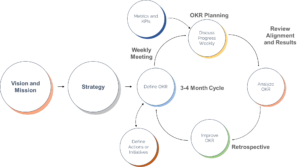
Figure 1. OKR Methodology and Cycle
OKRs and Project Management
While OKR is the way to define objectives for a short period, and establish the desirable results, project management, especially agile methodologies, is the way to become those objectives and results into a reality. OKRs allow business and project managers to face uncertain, evaluate risk, and changes in the market to set the direction and to make decisions about what changes are needed in current projects or which projects initiate or cancel.
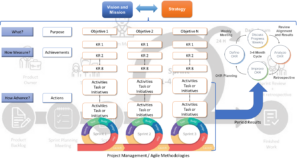
Figure 2. OKRs and Project Management
The objectives execution through project management allows to gather the information and get the metrics needed to determine if objectives are achieved in a short period, with the aim to execute the OKR cycle again. From objectives, product owners, business analysts, and project managers can organize and plan releases, iterations, and sprints to develop the product.
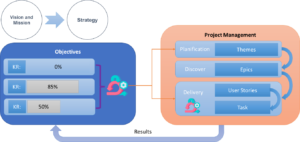
Figure 3. OKRs and Project Management Alignment
Final Considerations
- To develop OKRs one of the keys is consistency in them since it will be useless to start based on them and then never feedback or evaluate them.
- It is always good to reference the methodology in already proven models, however, to achieve the maximum potential and understand the development of a specific case it is convenient to study and adapt the OKRs.
- OKRs are a very powerful tool, however, it is difficult to strategically guide an organization based on them because:
- They don’t necessarily have a long-term vision but are set for more limited periods.
- Lack of management in the evolution of different scenarios and the detection of changes.
- They only contemplate the results.
- The processes to achieve results are based on project management.
OKRs can be defined as a tool of the great potential that will allow articulating with other procedures to obtain what would be an organizational strategy.




